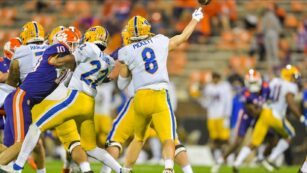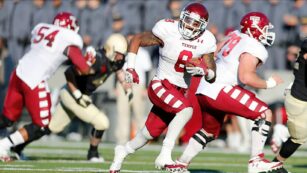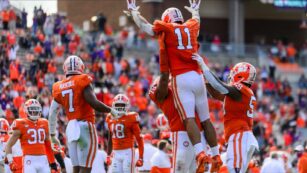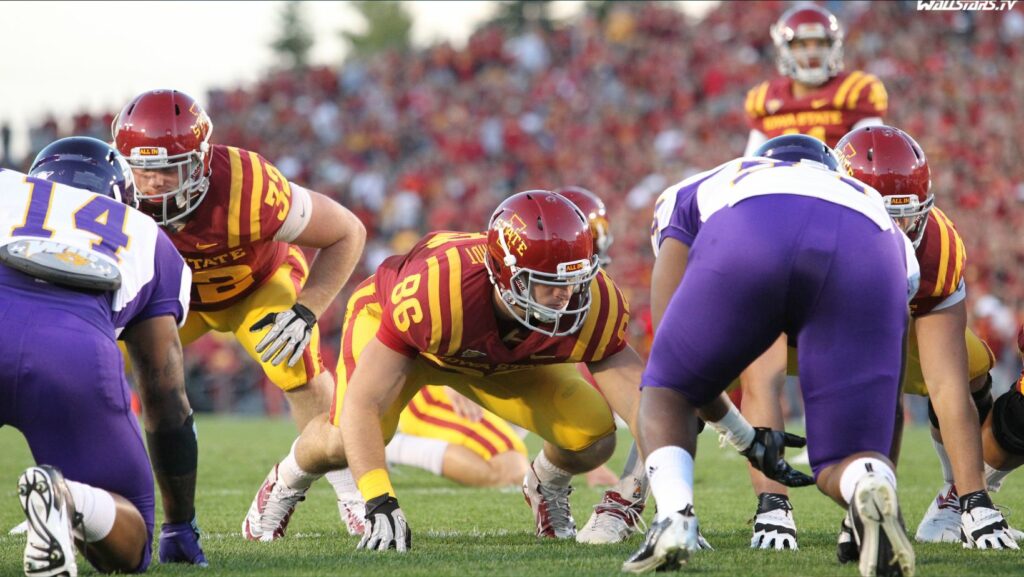The thrill of NCAA football is in its unpredictability. Yet, the allure of making accurate game predictions has fans and analysts alike poring over stats, trends, and team dynamics. This article dives into the intriguing world of NCAA football game predictions, offering insights that could give you an edge in your next friendly wager or fantasy league draft. From understanding key factors that influence game outcomes to exploring the science behind prediction models, we’ll unravel the complexities of forecasting NCAA football games.
NCAA Football Game Predictions
 The recent patterns in NCAA football predictions showcase the increasing reliance on statistics, complex algorithms, and machine learning. Data-driven prediction models, based on parameters such as player performance, team history, and even environmental factors like weather and field conditions, have marshaled a revolution. These models, often accurate more often than pure intuition, exemplify how analytics can augment the art of prediction. Notable examples include ESPN’s Football Power Index (FPI), which amalgamates comprehensive data to project game outcomes. Data analytics has emerged as a crucial game-changer in predicting game outcomes. By quantifying the many variables of football–from player strength and conditioning levels to historical rivalries and tactical complexities–advanced machine learning algorithms can trawl through the dense fog of data, illuminating patterns invisible to the human eye.
The recent patterns in NCAA football predictions showcase the increasing reliance on statistics, complex algorithms, and machine learning. Data-driven prediction models, based on parameters such as player performance, team history, and even environmental factors like weather and field conditions, have marshaled a revolution. These models, often accurate more often than pure intuition, exemplify how analytics can augment the art of prediction. Notable examples include ESPN’s Football Power Index (FPI), which amalgamates comprehensive data to project game outcomes. Data analytics has emerged as a crucial game-changer in predicting game outcomes. By quantifying the many variables of football–from player strength and conditioning levels to historical rivalries and tactical complexities–advanced machine learning algorithms can trawl through the dense fog of data, illuminating patterns invisible to the human eye.
Learning the analytics inherent in NCAA football game predictions can significantly improve prediction accuracy. An accumulated understanding of variables such as player form, team morale, injury history coupled with the ability to make sense of vast data sets can refine one’s predictive capabilities. Platforms like Pro Football Focus, for instance, offer a multitude of robust metrics invaluable to both amateur and seasoned predictors, providing the tools to navigate the nuanced world of college football predictions. Finally, the engagement with football game predictions amplifies the spectator experience. It adds another level of anticipation and thrill. Accurately predicting a game’s outcome not only validates one’s understanding of the sport but also offers bragging rights among peers or potential windfalls in fantasy sports leagues. Platforms like the Yahoo! NCAA Fantasy Football league further this interactive experience as they rely heavily on data-backed predictions in enhancing player engagement.
variables such as player form, team morale, injury history coupled with the ability to make sense of vast data sets can refine one’s predictive capabilities. Platforms like Pro Football Focus, for instance, offer a multitude of robust metrics invaluable to both amateur and seasoned predictors, providing the tools to navigate the nuanced world of college football predictions. Finally, the engagement with football game predictions amplifies the spectator experience. It adds another level of anticipation and thrill. Accurately predicting a game’s outcome not only validates one’s understanding of the sport but also offers bragging rights among peers or potential windfalls in fantasy sports leagues. Platforms like the Yahoo! NCAA Fantasy Football league further this interactive experience as they rely heavily on data-backed predictions in enhancing player engagement.
Important Metrics in NCAA Football Analysis
 Team Performance Metrics form an essential pillar in NCAA football analysis. An accurate evaluation of a team’s past and present performance offers vital clues to predict future outcomes. Metrics such as Total Yards per Game (TYG) reveal a team’s offensive strength, while Interceptions (INTs) thrown or fumbles lost expose potential weaknesses. For instance, a team with high TYG but a significant number of INTs might have a potent offense but a tendency for costly errors. On an individual level, the performance metrics of key players significantly impact predictions. Observations revolving around Pass Completion Percentage (PCP), Rushing Yards per Attempt (RYPA), or Tackle Success Rate (TSR) manifest an athlete’s effectiveness and reliability. A quarterback with a high PCP, for example, generally indicates a reliable passing game, influencing predictive outcomes.
Team Performance Metrics form an essential pillar in NCAA football analysis. An accurate evaluation of a team’s past and present performance offers vital clues to predict future outcomes. Metrics such as Total Yards per Game (TYG) reveal a team’s offensive strength, while Interceptions (INTs) thrown or fumbles lost expose potential weaknesses. For instance, a team with high TYG but a significant number of INTs might have a potent offense but a tendency for costly errors. On an individual level, the performance metrics of key players significantly impact predictions. Observations revolving around Pass Completion Percentage (PCP), Rushing Yards per Attempt (RYPA), or Tackle Success Rate (TSR) manifest an athlete’s effectiveness and reliability. A quarterback with a high PCP, for example, generally indicates a reliable passing game, influencing predictive outcomes.
Environmental factors also offer essential indicators for NCAA football analysis. These factors, such as home-field advantage, altitude, and weather conditions, could sway game results. A team playing at a high-altitude field or adverse weather conditions brings an unpredictable variable into the prediction equations. Situational metrics encompass the in-game situations that could alter a team’s play style or performance. These variables include time remaining, scoring margins, or down-and-distance scenarios, which are assessed to refine predictions. For instance, how a team performs during pressure situations, such as when trailing in the last quarter or facing a particular down-and-distance predicament, delivers valuable predictive insights.
conditions, could sway game results. A team playing at a high-altitude field or adverse weather conditions brings an unpredictable variable into the prediction equations. Situational metrics encompass the in-game situations that could alter a team’s play style or performance. These variables include time remaining, scoring margins, or down-and-distance scenarios, which are assessed to refine predictions. For instance, how a team performs during pressure situations, such as when trailing in the last quarter or facing a particular down-and-distance predicament, delivers valuable predictive insights.
Conclusion
The world of NCAA football game predictions has truly evolved. Technology’s role in driving this transformation can’t be overstated. It’s the use of advanced tools like ESPN’s Football Power Index and Pro Football Focus that’s taking prediction accuracy to new heights. The real-time adjustments in predictive models have added another layer of precision and dynamism.

